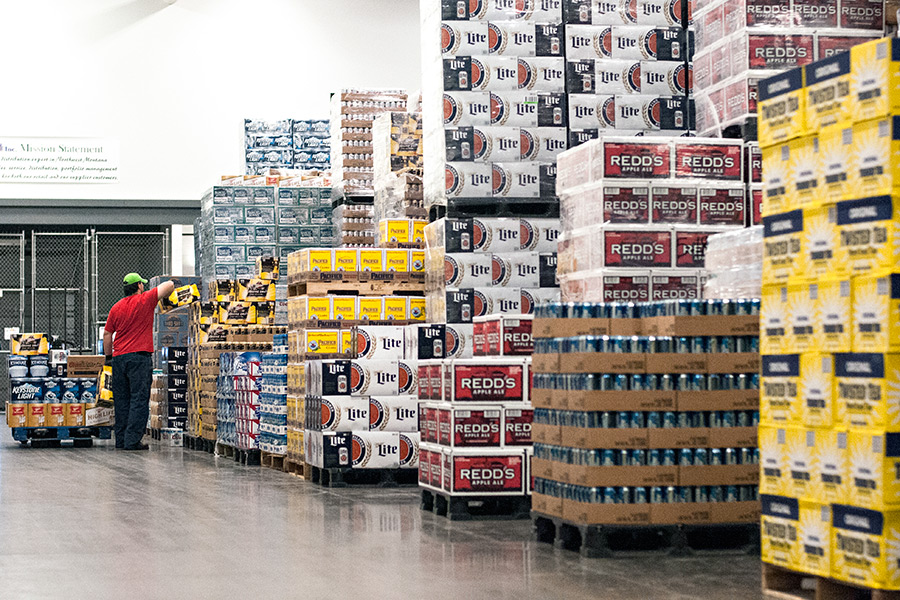Besides the regular quarreling between Republican and Democratic lawmakers, a high-profile conflict between the various interests in the alcohol industry appears likely to erupt at the upcoming state legislative session in Helena.
Last week one of the main industry players — the Montana Beer and Wine Distributors — announced their separation from a statewide coalition that included members of the Montana Tavern Association and Montana Brewers Association. The group has been trying to patch up relations and find common ground after a big blowup in the 2013 session.
The distributors’ split occurred on the eve of the January session due to disagreements over a specific bill that is being promoted by the coalition seeking to change a section of the state’s contentious and complex alcohol licensing requirements.
The bill, referred to as the “license stacking bill,” would allow breweries to purchase a retail license to sell beer and liquor while also allowing retail on-premise locations, like bars, to purchase a brewery license and brew their own beer.
As it stands now, an individual can only own one type of alcohol license in Montana, although some business owners have found a way to work around the regulations by establishing separate businesses under different owners, but all working essentially under the same roof.
The list of breweries across the state that have found a legal way to circumvent the regulations include Tamarack Brewing Company in Lakeside, Great Northern Brewing Company in Whitefish, Red Lodge Ales, Lewis and Clark Brewing Company in Helena and KettleHouse Brewing Company in Missoula.
Proponents of the bill say it would streamline business operations for establishments and provide another opportunity to succeed without being hamstrung by outsized regulations.
Currently, breweries that produce over 100 barrels but less than 10,000 barrels annually can sell up to 48 ounces of beer to a customer on site from 10 a.m. to 8 p.m. If a brewery exceeds 10,000 barrels, it can still provide beer samples but cannot charge. For example, Big Sky Brewing in Missoula operates a free tasting room.
Opponents of the bill say the current system is already providing important checks and balances and by altering the law, businesses, whether it’s a brewery or bar, could become so-called vertical monopolies that could dominate the market with an unfair advantage. Other businesses that wanted to compete with those that owned two licenses would have to also buy a license from the quota system, which would further entrench a controversial issue, according to those opposed.
“The integrity of a balanced market structure that is purposely designed to level the playing field so everybody wins is more important than carving out regulations for special interests who already have licenses,” Brian Clark, the general manager of Fun Beverage, which distributes the majority of alcohol in Northwest Montana, told the crowd at last week’s Kalispell Chamber of Commerce luncheon.
A few breweries have publically sided with the distributors and raised support for a different type of change.
“I believe raising the barrel limit is a much better solution to allow Montana breweries to grow their production without losing their ability to operate a taproom,” Brian Smith, managing partner of Blackfoot River Brewing Co., in Helena, said in a press release announcing the distributors’ separation from the coalition.
Smith added, “In the long run, the ideal solution would be to create a Brewpub license that would remove the retail restrictions on individual breweries, while keeping breweries, taverns and distributors separate.”
Since the last Legislature in 2013, which featured a much-publicized fight between Montana’s tavern and brewery associations, the opposing sides have tried to patch things up and compromise on reform. This occurred in the form of a newly established coalition, dubbed the “Alcohol Beverage Coalition,” that included members of the MTA, MBA and MBWD.
The relationship between breweries and taverns appears to be significantly mended, but now there’s a new wrinkle involving the distributors.
“I’m extremely disappointed that they walked away from the whole coalition,” said Josh Townsley, co-owner of Tamarack Brewing Co. and president of the MBA. “We’re sorry they feel that they would rather be away from the table.”
Townsley said he disagreed with opponents who said the potential license stacking bill would find a solution to create a problem.
“It’s a step. It’s not a perfect option but it’s a positive move working forward,” said Townsley.
The proposed bill emerged from a new effort among the various sides of Montana’s robust alcohol industry — distributors, breweries and taverns, as well as the gaming industry — to get along while existing in a new age of alcohol consumption.
In just the past decade, the number of craft breweries in Montana has skyrocketed from a handful to over 40. Craft beer production increased 49 percent from 2010 to 2013.
Along with this noticeable change, the distribution has shifted from traditional products — the mainstream lineup of beers from nationwide companies such as Anheuser-Busch — to more locally manufactured craft beers. According to Clark, Fun Beverage has seen a 30 percent increase in craft beer distribution in the last decade. Statewide data also shows a shift in where people purchase alcohol, with off-premise sales at grocery stores and other retailers increasing.
No doubt, the alcohol industry is a lucrative one. The economic impact of beer and wine distribution in Montana totaled $197.3 million in gross sales last year, according to a study by the University of Montana Bureau of Business and Economic Research.
In other words, there is a lot at stake and varied interests on all sides.
“It’s going to be a very interesting (legislative) session with regards to alcohol,” Clark said.
